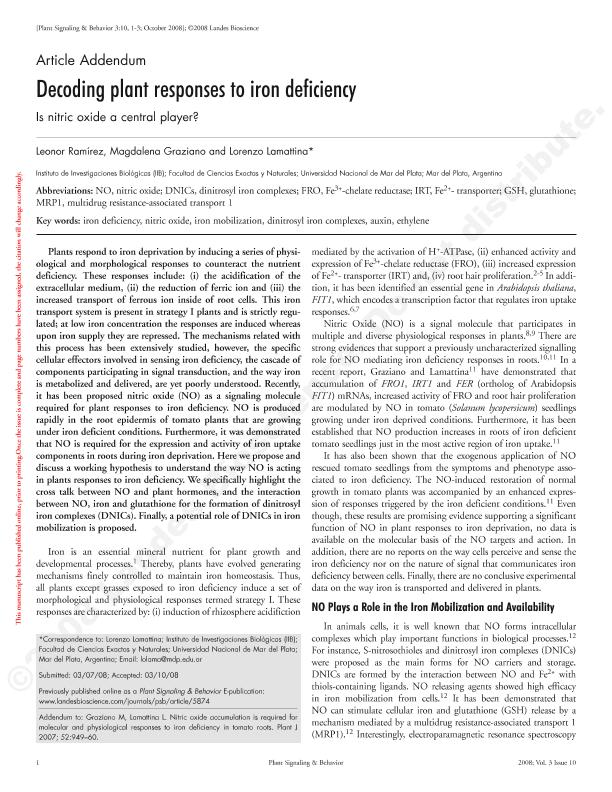Artículo
Decoding plant responses to iron deficiency: Is Nitric Oxide a central player?
Fecha de publicación:
01/10/2014
Editorial:
Landes Bioscience
Revista:
Plant Signaling & Behavior
ISSN:
1559-2324
Idioma:
Inglés
Tipo de recurso:
Artículo publicado
Clasificación temática:
Resumen
Plants respond to iron deprivation by inducing a series of physiological and morphological responses to counteract the nutrient deficiency. These responses include: (i) the acidification of the extracellular medium, (ii) the reduction of ferric ion and (iii) the increased transport of ferrous ion inside of root cells. This iron transport system is present in strategy I plants and is strictly regulated; at low iron concentration the responses are induced whereas upon iron supply they are repressed. The mechanisms related with this process has been extensively studied, however, the specific cellular effectors involved in sensing iron deficiency, the cascade of components participating in signal transduction, and the way iron is metabolized and delivered, are yet poorly understood. Recently, it has been proposed nitric oxide (NO) as a signaling molecule required for plant responses to iron deficiency. NO is produced rapidly in the root epidermis of tomato plants that are growing under iron deficient conditions. Furthermore, it was demonstrated that NO is required for the expression and activity of iron uptake components in roots during iron deprivation. Here we propose and discuss a working hypothesis to understand the way NO is acting in plants responses to iron deficiency. We specifically highlight the cross talk between NO and plant hormones, and the interaction between NO, iron and glutathione for the formation of dinitrosyl iron complexes (DNICs). Finally, a potential role of DNICs in iron mobilization is proposed.
Palabras clave:
iron deficiency
,
nitric oxide
,
plants
Archivos asociados
Licencia
Identificadores
Colecciones
Articulos(IIB)
Articulos de INSTITUTO DE INVESTIGACIONES BIOLOGICAS
Articulos de INSTITUTO DE INVESTIGACIONES BIOLOGICAS
Citación
Ramírez, Leonor; Graziano, Magdalena; Lamattina, Lorenzo; Decoding plant responses to iron deficiency: Is Nitric Oxide a central player?; Landes Bioscience; Plant Signaling & Behavior; 3; 10; 1-10-2014; 795-797
Compartir
Altmétricas




